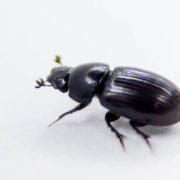ECT organises a ring test with dung beetles
European legislation requires testing of parasiticides using, among others, dung beetles (OECD GD 122). Currently, Aphodius constans, a dweller species, has been approved as a test species for residues in dung. However, results of tests using A. constans may not be relevant for tunneler species.


 K. Duis
K. Duis



